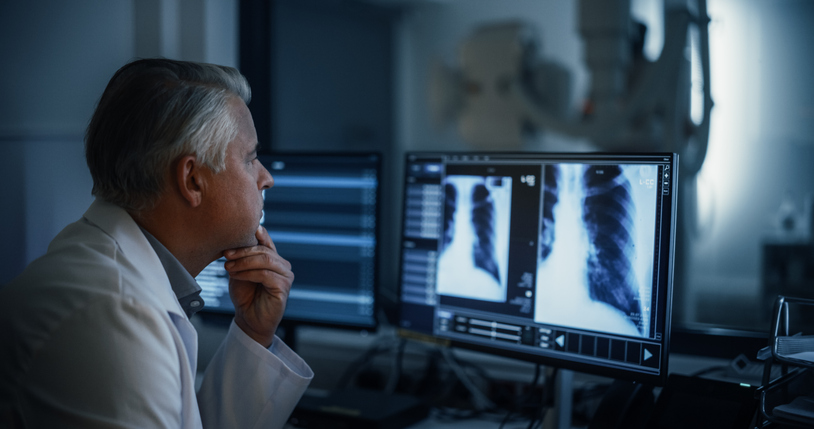
The American Medical Association (AMA) has formally endorsed the use of low-dose CT scans (LDCT) for early lung cancer detection—a landmark move that could save thousands of lives. This resolution reinforces decades of medical research and public health recommendations, aiming to improve access and reduce late-stage lung cancer diagnoses across the U.S.
For high-risk individuals, especially longtime smokers, LDCT offers a powerful way to detect lung cancer before symptoms appear. With support from the AMA and other top health agencies, this tool is quickly becoming the new standard for preventive lung care.
Why Early Detection Through LDCT Matters
Lung cancer remains the leading cause of cancer deaths in the United States, largely due to delayed diagnosis. Most people don’t experience noticeable symptoms until the disease has progressed, often leaving few treatment options.
Low-dose CT scans provide a noninvasive way to catch lung cancer in its earliest and most treatable stages. These scans use significantly less radiation than standard CT imaging and can reveal small nodules or growths that X-rays might miss. According to extensive studies, LDCT screening can reduce lung cancer mortality by up to 20% in high-risk patients.
The AMA’s support underscores the importance of expanding access to this life-saving screening—especially among those most vulnerable.
Breaking Barriers to Access and Insurance Coverage
Although LDCT is already recommended by the U.S. Preventive Services Task Force (USPSTF) and covered by Medicare, usage remains shockingly low. Less than 15% of eligible Americans get screened each year. This is often due to limited awareness, lack of provider recommendations, or insurance hurdles.
The AMA’s resolution calls on public and private insurers to offer full coverage for annual LDCT scans. It also urges providers to follow up on incidental lung findings during unrelated imaging, such as cardiac CTs. These incidental nodules could represent early-stage cancers, and recognizing them could significantly impact outcomes.
By making lung screening more routine, the AMA aims to close gaps in access and ensure that early detection becomes the rule—not the exception.
Aligning Lung and Heart Health in Screening
Another forward-thinking aspect of the AMA’s resolution is its push to integrate lung cancer screening with cardiovascular evaluations. Many patients undergoing cardiac CTs may also benefit from lung screening, particularly if they have a history of smoking.
Healthcare providers are encouraged to assess both cardiovascular and cancer risks during diagnostic imaging. This unified approach allows doctors to offer more comprehensive care and improve efficiency, while reducing the chance of missing a critical early warning sign.
What High-Risk Patients Need to Know
If you’re between 50 and 80 years old, have a 20 pack-year smoking history, and currently smoke or quit within the past 15 years, you likely qualify for annual LDCT screening. These scans are quick, painless, and often covered by insurance.
Even if you feel fine or have quit smoking years ago, screening may still be essential. The goal is to detect cancer long before it causes symptoms. And with early diagnosis, your chances of successful treatment and long-term survival increase dramatically.
This new push from the AMA is about more than just access—it’s about empowering patients to take charge of their lung health with the best tools available.
How Providers Can Support This Initiative
Physicians and radiologists play a crucial role in expanding LDCT use. Providers should:
- Educate eligible patients about screening benefits
- Integrate shared decision-making in primary care visits
- Implement consistent follow-up for scan findings
- Offer smoking cessation resources as part of lung health programs
Normalizing LDCT screening—just like colonoscopies or mammograms—can help reduce stigma around lung cancer and improve patient outcomes.
Quick Facts
- Age 50–80, 20 pack‑year history, current smokers or quit within 15 years: You qualify for annual LDCT screening
- Backed by CMS, USPSTF, AMA, ACS, ACC, and others
- Routine follow‑up, shared decision-making, and smoking cessation support are essential components
Taking the Next Step Toward Prevention
The AMA’s endorsement of low-dose CT scans for early lung cancer detection marks a turning point in public health. With more coverage, better education, and stronger support from physicians, early screening can become a powerful weapon against one of the most lethal cancers in America.
If you meet the screening criteria or care for someone who does, now is the time to act. Ask your doctor about LDCT screening. It could be the decision that saves your life—or the life of someone you love.

 EPA to Reconsider Chrysotile Asbestos Ban: 30-Month Delay Raises Health Concerns
EPA to Reconsider Chrysotile Asbestos Ban: 30-Month Delay Raises Health Concerns